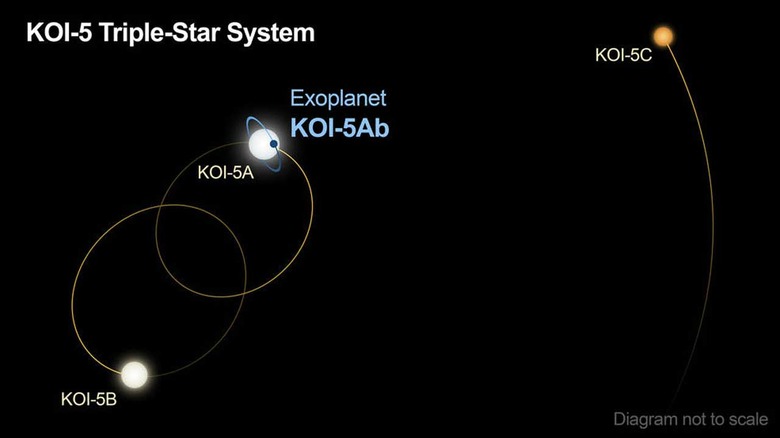Triple Star System Discovered In NASA Kepler Data
NASA began operating the Kepler mission in 2009. The space telescope spotted a planet estimated to be about half the size of Saturn in a multiple-star system called KOI-5Ab. That was the second planet candidate ever discovered by Kepler but was ultimately ignored.
Kepler operated until 2018 and discovered 2394 planets orbiting stars beyond the sun. The mission also found an additional 2366 exoplanet candidates that still require confirmation. Scientists say KOI-5Ab was abandoned because it was complicated, and there were thousands of potential planetary candidates that were easier pickings.
Years after its discovery, KOI-5Ab is now being investigated using new observations from another NASA planted-hunting mission called TESS, along with data from several ground-based telescopes. Some new and exciting details of KOI-5Ab have surfaced thanks to the observations. The planet itself is most likely a gas giant similar to Jupiter or Saturn.
What's so interesting about the planet is that it orbits a star with two other companion stars on a plane out of alignment with at least one of the stars. Researchers say the arrangement questions how each member in this system formed from the same swirling clouds of gas and dust. Researchers say that there aren't many known planets that exist in triple-star systems.
KOI-5Ab is special because its orbit is skewed, and scientists have lots of questions about how and when planets form in multiple-star systems and how properties compare to planets that form in single-star systems. Researchers hope to gain insight into how the universe makes planets by observing the system further.

KOI-5Ab orbits Star A, which has a relatively close companion known as Star B. Those two stars orbit each other every 30 years, with a third gravitationally bound star known as Star C orbiting the other two stars every 400 years. As interesting as this triple star system is, this isn't the first time NASA has discovered evidence of planets in double and triple-star systems. However, more planets are discovered in single-star systems. Researchers say that triple-star systems make up about 10 percent of all star systems
